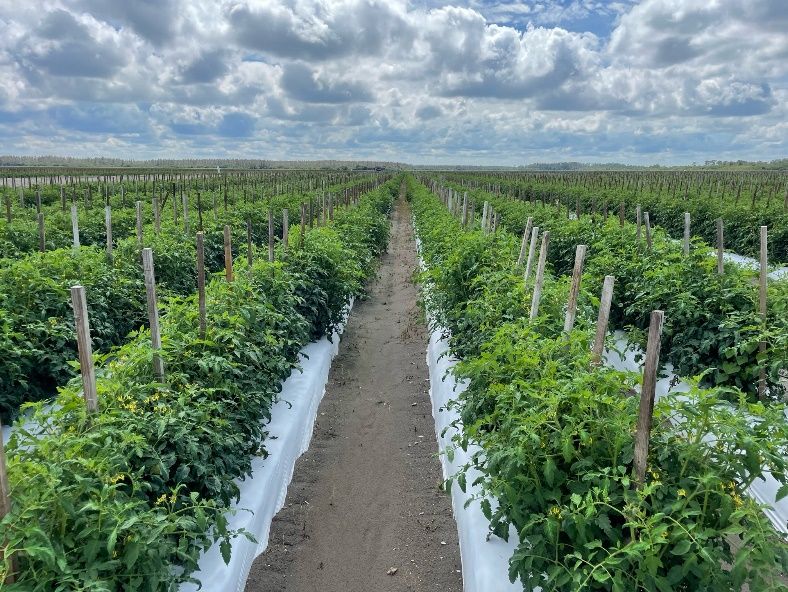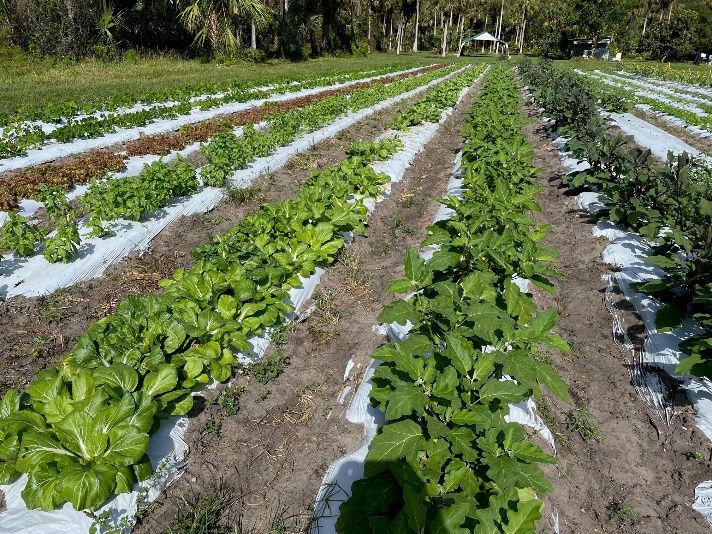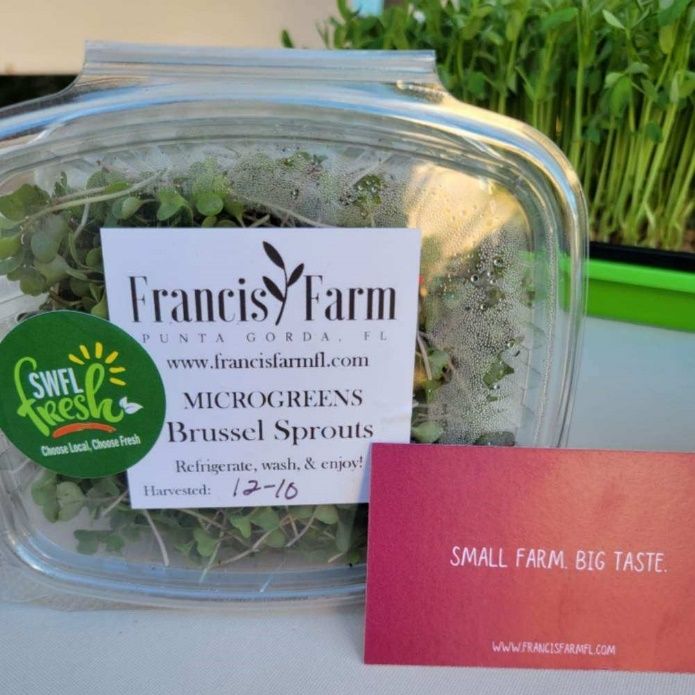In all introductory economics courses, the agricultural industry serves as the primary example of a “perfectly competitive” market structure. This idealized model consists of many buyers and sellers who are smaller than the total market. Sellers offer the same products, and businesses have free entry and exit to the market. In theory, farmers are not able to set prices for their products, and instead “take the price” offered by buyers. For example, to achieve profitability, a traditional wholesale vegetable grower works year-round to find ways to reduce costs by, for instance, growing a single crop or renting more land, or to earn higher revenues by, for instance, investing in high tunnels to grow produce to sell earlier in the season ahead of the competition.

Credit: J. Ryals
The purpose of this publication is to look at ways agriculture can be an imperfectly competitive market. The publication is intended to help Florida’s small- and medium-sized farmers explore opportunities to improve revenues by identifying markets where farmers have some measure of control over pricing for their food products. Economists describe markets in which businesses may offer their products by setting their own prices as “imperfectly” competitive. We aim to answer the following common questions: Why are some competitive markets defined as “imperfect”? What does this mean for farmers and their buyers? What are the added costs and benefits to farmers who decide to sell into imperfectly competitive markets?
Successful ventures into imperfect markets are motivated by farm managers’ decisions to intentionally focus on solving the “why” lurking behind a customer’s buying decision. For example, why do we eat turkey on Thanksgiving, and Christmas, but rarely during the rest of the year? Why is a class of college first-year students able to rattle off the names of several apple varieties, but unsure where apples are grown in the United States? In sum, consumers’ decisions are affected by seasonality, emotion, tradition, and retail offering in ways we can learn about and share with our farmers to help them craft a competitive advantage in the marketplace. This publication will present an analysis of how strategic investments in marketing activities beyond the point of sale can help farmers differentiate their products, enabling them to influence product pricing and consequently, increase their revenue streams.

Credit: J. Ryals
Dare To Be Different
By strategically investing in marketing activities, farmers can carve out niche markets and foster enduring customer relationships, achieving ‘defensible differentiation.’ This differentiation establishes unique and valuable product attributes that set these farmers’ products apart from those of their competitors. The “defensibility” results from the ability of the farmer and the customer to nurture this relationship over time. The “differentiation” is built around the needs and wants unique to the target audience and known only to involved parties. Examples of this type of differentiation are growing specialty produce for restaurants, building relationships with other producers to offer a wider availability of products, giving consumers options for internet and mail orders, integrating transportation into the business structure to provide products on a schedule, offering agritourism and u-pick options, or using social media to sell products and share behind-the-scenes operations to educate consumers and promote the farm. Investing your time and resources in marketing activities is necessary to attract each first-time customer, so it is important to gather data about your customers to encourage them to come again. Producers are able to reap higher profits when they build relationships with consumers and educate them about their unique products and farming processes. Those producers whose marketing campaigns are effective can set prices that will offset the costs of those campaigns. Building ongoing relationships with your client base is key to repeat purchases and word-of-mouth referrals. Track marketing costs, consumer data, and profits and losses scrupulously to learn whether your marketing strategy remains strong.

Credit: J. Ryals
When deciding to take on the role of marketing “beyond the farm gate,” farmers need to track customer data carefully. Customer data is the market feedback farmers need to make sound decisions and build their defensible market strategy. Pricing is an important part of a marketing effort. If the price is too low, the consumer may suspect that the quality of the product is similarly low. If the price is too high, the consumer may suspect the farmer is overcharging. Accurate pricing, on the other hand, grows trust. It reveals to the buyer the time and money the farmer has invested to grow the food and bring it to market. The price of a product is an important part of the message about that product and why it may be the best choice to meet the buyer’s needs. Likewise, consumer behavior delivers a message to the farmer. Consumers’ actions up to and including the decision to buy a farmer’s product tell the farmer something about why that item was or was not the consumer’s preferred choice. Armed with this data, the farmer discovers the answers to the economic questions of what to produce, for whom, how much, and when. Careful study of customers’ needs and wants keeps those customers returning to the farmer, and, in time, as consumers communicate with one another, will attract more customers with similar demands. Empowered with market intelligence, farmers can make annual production and marketing decisions to cultivate their share of the target market and retain their customers’ loyalty over time.
Why would farmers be willing to invest in understanding individual food buyers’ wants and needs and setting their own prices? The current food system works the way it does because it has proven to be efficient and effective over time. Keeping up with every person’s taste and preference is an impossible task for a single farmer. Identifying a market segment of buyers who are willing and able to spend their food dollars on a specific set of food products requires committed effort and the ability to react quickly in response to dynamic situations and unexpected events.

Credit: Circle C Farm
As experienced farmers know, acquiring the necessary knowledge of market trends to communicate a “price story” requires time, effort, and additional risk to the farm business. Added marketing costs and regulatory requirements beyond the farm gate, which include packing, storage, distribution, shipping, etc., must be factored into the pricing strategy.

Credit: J. Ryals
Nurture Virtual Connections
The key element that drives opportunities for farmers to compete in imperfect markets is access to affordable technology. Online platforms such as Facebook, YouTube, and Instagram are useful to build connections that shrink the distance between farm and customers. Farmers can use these platforms to position their farm story and attract the attention of key influencers at a low cost compared to building and maintaining a website.
Farmers can also share their relationships with their extended networks, which capitalizes on their investment in these promotional tools. Once a marketing campaign has begun, a farm’s marketing manager can collect data generated by social media platforms, internet orders, and mobile purchasing apps. This data can capture real-time market reactions to messages aimed at communicating the value of product offerings.

Credit: J. Ryals
The Southwest Florida Fresh: Choose Local, Choose Fresh website was created by the Southwest Florida Regional Planning Council, UF/IFAS, and producers in a five-county region in response to the devasting impacts of Hurricane Irma in 2017, and more recently, the COVID-19 pandemic, on southwest Florida farmers. The platform connects producers and consumers and educates consumers about available seasonal products. The program reduces distribution complexities and provides a regional brand for local producers to use when selling their products, all while meeting customer expectations for fresh local produce available at convenient venues. Farms register and create a profile to share what products they offer and where people can find them. Branding is consistent but shares each individual farm story, allowing customers to recognize and seek out participants’ farm products across market outlets.

Credit: J. Ryals
Florida Market Maker joined The National Food Market Maker Network as one of 20 state partners, allowing UF/IFAS personnel to collaborate statewide in a coordinated effort to help connect agribusiness across food supply chains and geographic boundaries. Florida Market Maker is a secure virtual infrastructure that is freely available to our farmers, ranchers, fishers, and the buyers to whom they market and sell, and who represent all aspects of production and consumption of the hundreds of food and food products grown and raised in Florida.
Summary
Imperfect markets offer farmers improved profit margins driven by each farmer’s ability to set prices based on knowing why people buy their products. Remember, that first customer costs your limited money and time to attract, and data gathered along the way is valuable information, so retention and referrals are key to building relationships with your client base. Long-term profitability for farmers who defensibly differentiate their food offerings relies upon offering unique products, targeting specific buyer segments, building relationships, loyalty, and trust with customers, finding ways to encourage them to spend more at each visit, and incentivizing them to share their experiences with their friends and family networks.
For more information on how to register your agribusiness at no cost on Southwest Florida Fresh and Florida Market Maker, please email either Kimberly Morgan (kimorgan@ufl.edu) or Jessica Ryals (jessicaryals@ufl.edu).